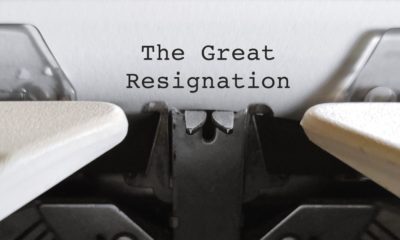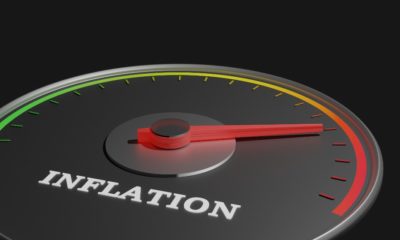Business
Fund Manager: We’ve All Forgotten That Investing Carries Risk

With the Nasdaq setting a new all-time high yesterday and the S&P 500 just 3% away from setting its own all-time high, market watchers are starting to scratch their heads and wonder if anything can drag the markets down.
There is still no vaccine for the coronavirus. The economy remains decimated by the slowdown. Millions of Americans just saw their last $600 enhanced unemployment check. Despite all these, stocks keep climbing higher.
A Reminder
Solomon Tadesse, the head of quantitative equities strategies, North America, at Societe Generale, thinks that investors should cool their heels a bit. The recovery from the February selloff was unprecedented and could falter if no vaccine is developed soon.
He says that historically, there have been 15 drawdowns of at least 30% since 1929. On average, the S&P 500 jumps 27% within a year. During this recovery, the markets jumped 45% in just four months.
Tadesse says that recovery is primarily based on economic stimulus from the government, and the hopes of a vaccine. While the government is working on the next stimulus bill, a vaccine is still a ways off.
“With questions on the effectiveness and wide availability of vaccines remaining, as well as the potential impacts of the pandemic's damage to the economy, there may be more downside risk from markets overshooting,” Tadesse said in a note to clients.
Tadesse believes the stock market is pricing in an economic recovery that could fail to live up to expectations. This may happen given the difficulty in developing a vaccine. It could also fail to reach expectations thanks to the unknown timeline of when it would be available.
“The long-term deleterious economic after-effects of pandemics could span multiple decades,” Tadesse added.
Red Flags
Fund manager Michael Gayed agrees with Tadesse, wondering if investors have forgotten that stocks don’t always move higher.
“Despite a crippling global pandemic, where the U.S. is failing miserably at a response with daily record after daily record cases being broken, and a U.S. economy that seems to be teetering on the edge of yet another Fed Monetary Policy response, stock markets have not seemed to blink when recovering.”
He sees a series of red flags in the markets. It starts with an inverted yield curve that investors have all but forgotten about.
“Yields this low means that valuations can increase, yes, but now that we are at these low levels, there's more likely to be a reversion to the mean here, in either the bond market or the stock market, said Gayed, adding “It’s often said that bond-market investors are the smart money and tend to lead the stock market in anticipating economic activity. The fact that yields have not risen meaningfully (quite the opposite) in the very short term is quite troubling as historically such short-term movement has tended to precede major periods of equity stress.”
He’s also worried that the utilities sector has outperformed the S&P 500 over the last 30 days, signalling that at least some investors are starting to get defensive with their investments.
“Generally, utilities are seen as safe-haven, recession-proof investments that likely outperform in any economy. Because of that, they tend to rally ahead of significant market pullbacks,” said Gayed. “That should raise some red flags as an equity investor, and frankly this alone gives me pause,” he said. “A similar movement occurred right before the COVID crash this year.”
Have Investors Forgotten the Risk Involved?
Gayed believes that investors have become too complacent. He also believes that investors possibly tend to overlook the serious risk in the market.
“It sure feels like everyone forgot that investing in stocks carries risk — and the conditions are changing so rapidly right now, it looks like risk might come back into full force.”
Up Next:















